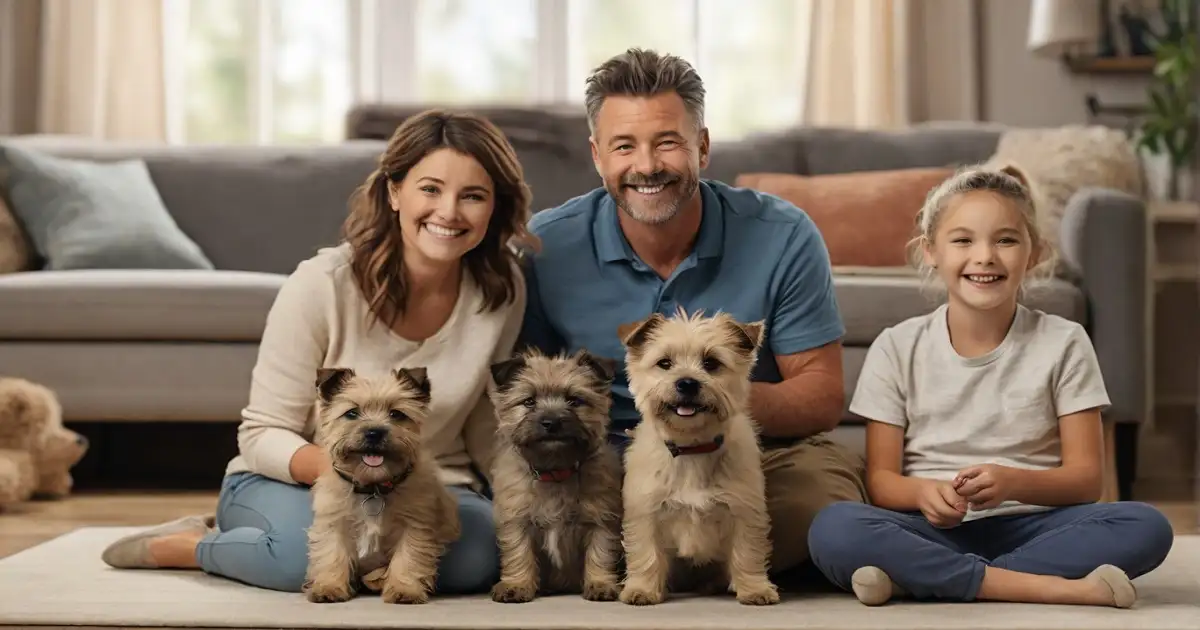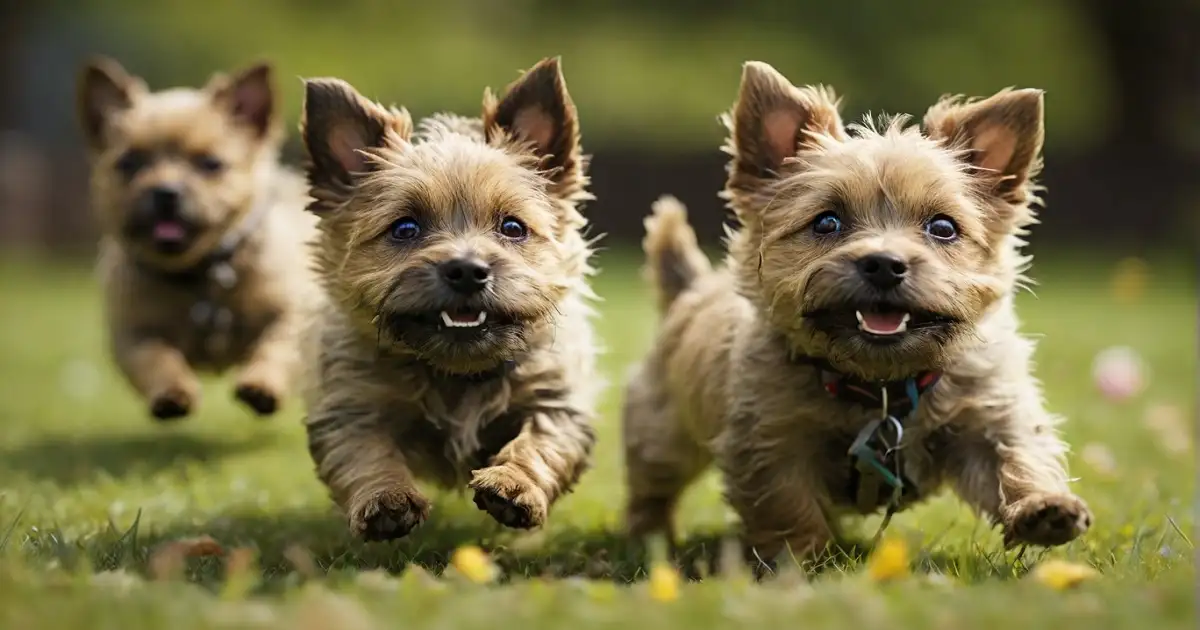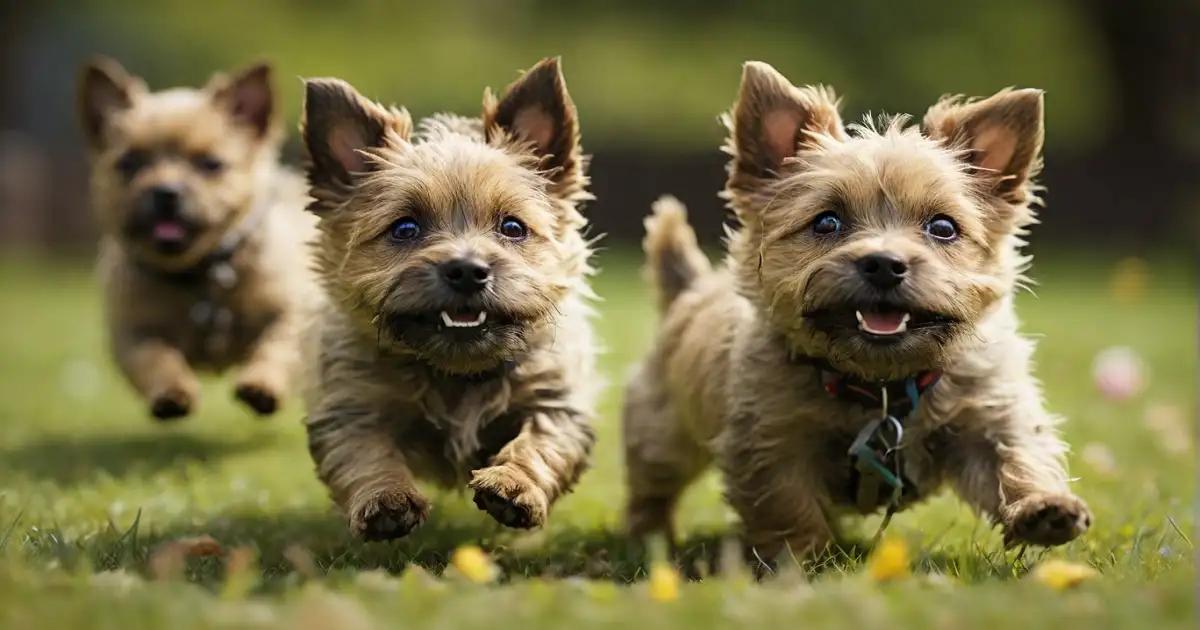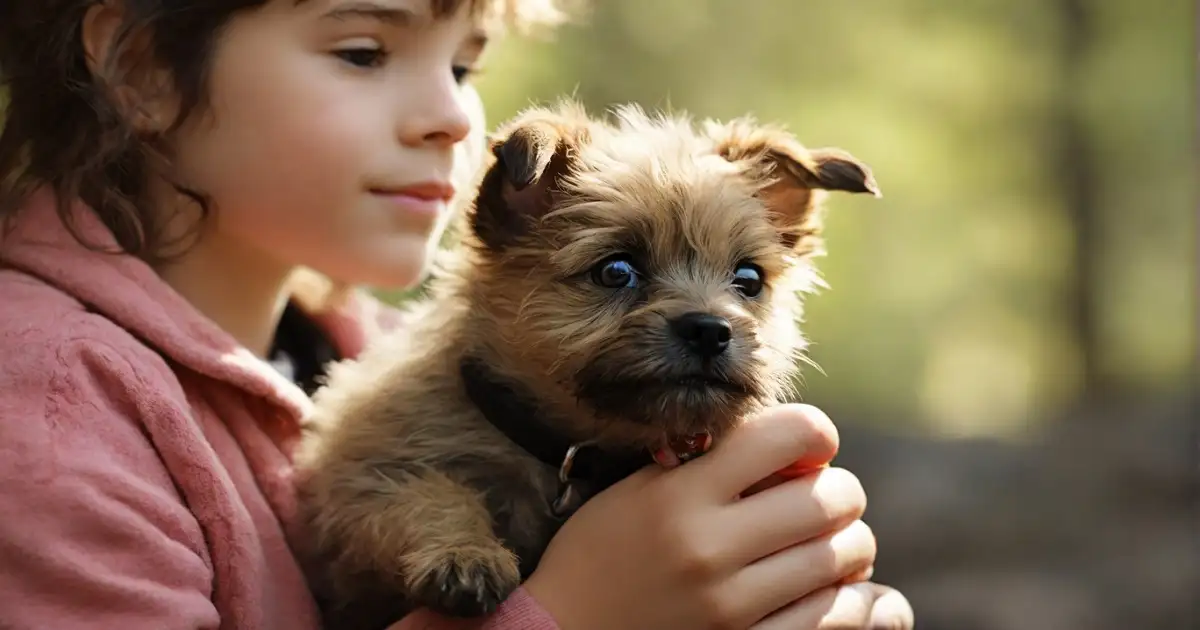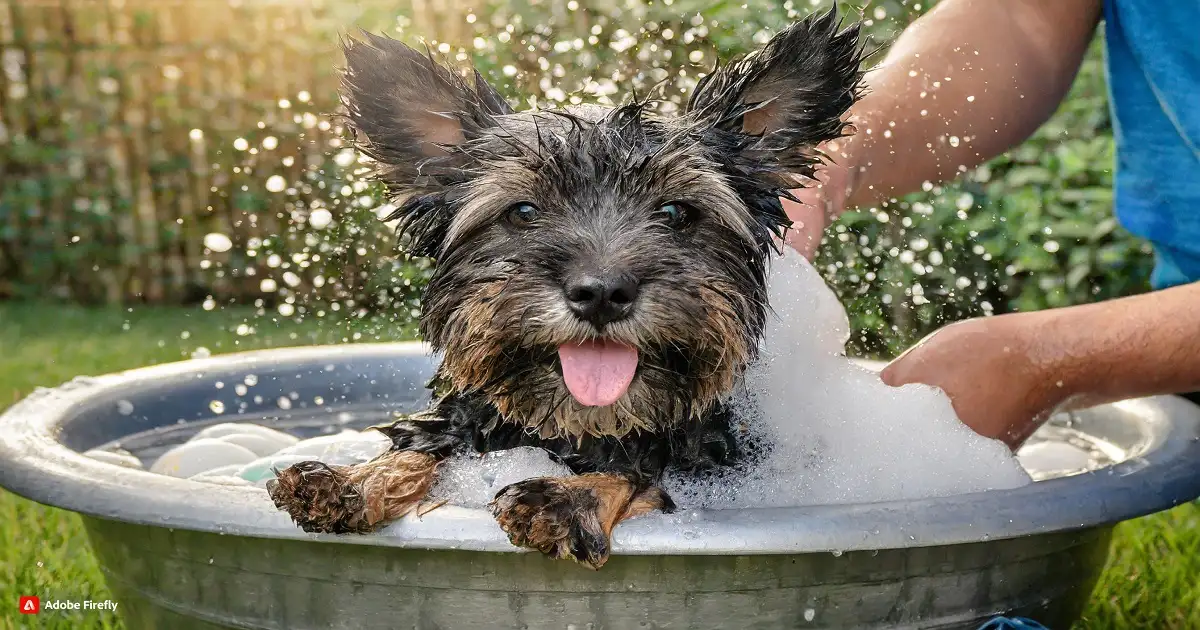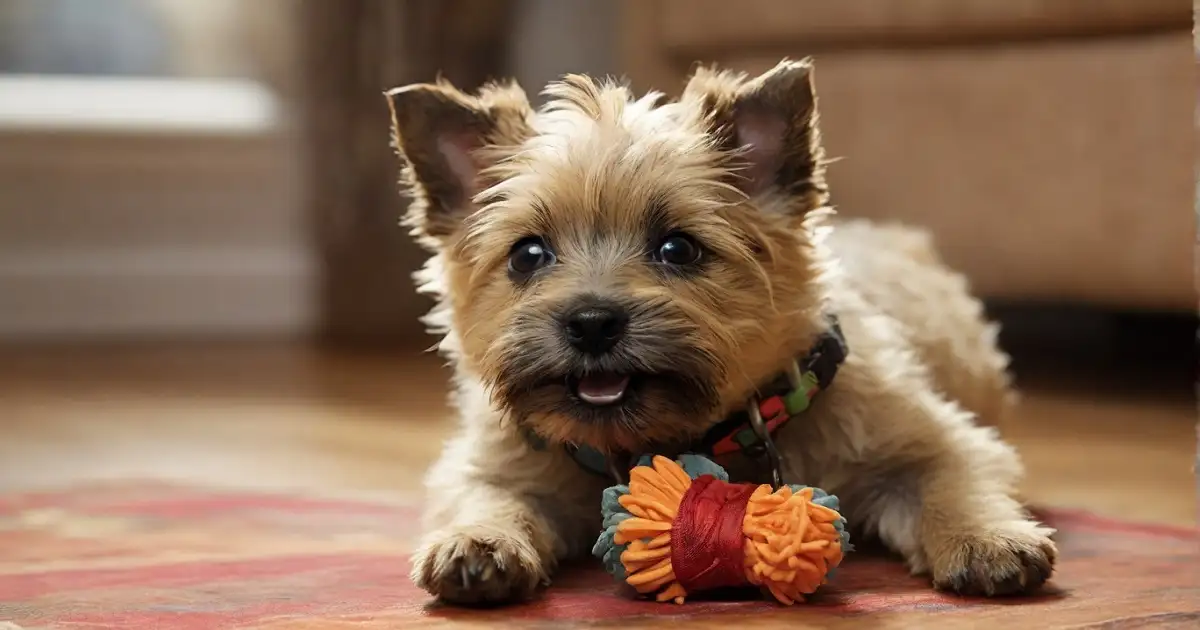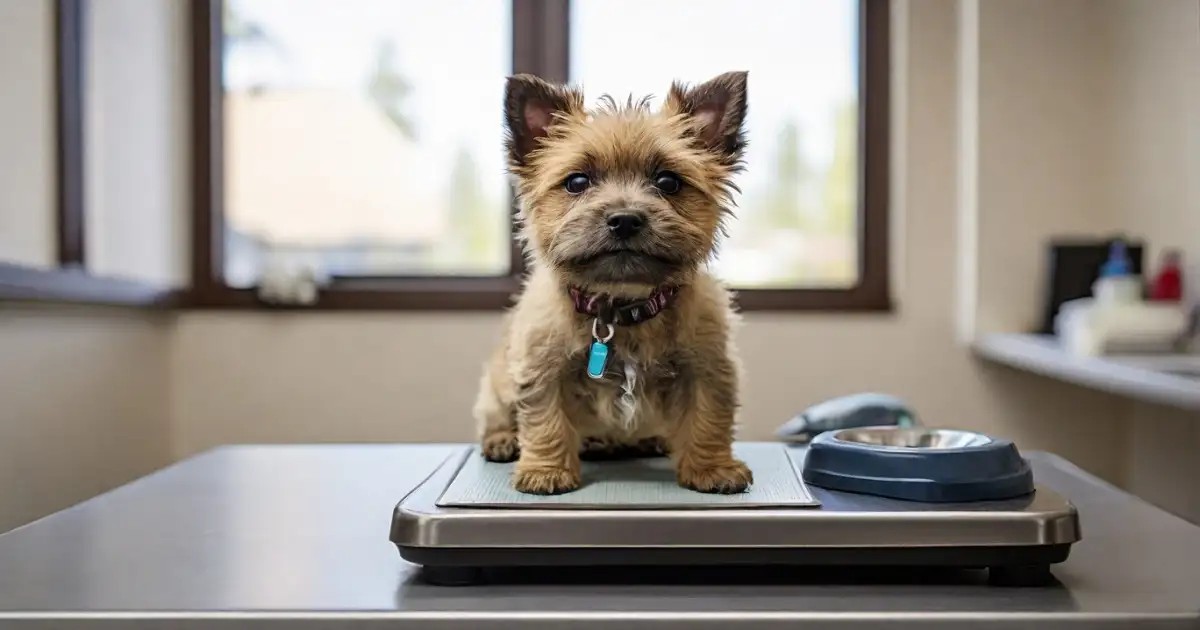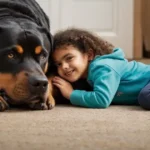Hey there! Are you thinking about getting a Cairn Terrier puppy? You’ve come to the right region, my pal. Bringing this kind of lively little furball home is fantastic and exciting. However, it’s a big duty too.
This complete guide’s got all the deets you need to make an appropriate suit and give your Cairn Terrier pup an awesome start in their new kingdom. We’ll chat about their origins, temperament, locating a breeder, prepping your palace, caring for your furkid, schooling guidelines – the works!
By the time you’re done studying, you will sense like a pro-Cairn Terrier pup figure. Let’s dig in!
Understanding the Cairn Terrier Puppies Breed
Cairn Terrier Puppies are an increasingly popular choice for households seeking to add a new hairy friend to their home. But earlier than you welcome this sort of spunky domestic dog into your existence, it is vital to apprehend what makes the Cairn Terrier breed tick.
Brief History of Cairn Terriers
Cairn Terriers originated in the Scottish Highlands, wherein they have been bred to hunt and rid farms of pesky rodents. Their call comes from the Gaelic phrase “cairn,” regarding the stone piles used to mark boundaries among farms.
Farmers quite valued these feisty operating terriers for their braveness, intelligence, and compact length. Over time, the breed earned a reputation past vermin-looking and has become popular as an unswerving circle of relatives partners.
Cairn Terrier puppies first arrived at the worldwide level in the early 1900s, gaining recognition at canine shows in England. The American Kennel Club officially diagnosed the breed in 1913.
Typical Temperament and Personality
One of the reasons Cairn Terrier puppies make such tremendous family pets is their spirited, joyful temperament. While impartial thinkers, they form robust bonds with their human pack.
Cairn Terriers are curious, naughty, and have a big personality in a small package deal. They are affectionate with family but can be reserved toward strangers. Early socialization is fundamental to ensuring your Cairn Terrier puppy grows into a properly-rounded adult canine.
Like many terriers, Cairn Terriers are tenacious when pursuing prey. While pleasant standard, they may now not do properly in homes with smaller pets.}Their high energy also means they require plenty of exercise and playtime.
Physical Characteristics
Cairn Terrier puppies grow into compact, sturdily built dogs approximately 10-13 inches tall and weighing 13-14 pounds.
Some key physical traits include:
- Short, weather-resistant coat in colors like cream, gray, red, black, or brindled
- Pointed, erect ears and a broad head
- Dark, alert eyes and a friendly expression
- Short legs with large front paws and hind feet that point outward
- A plumed tail that curves over the back
{ Now that you apprehend the heritage, persona, and attributes that outline this endearing breed, let’s circulate on to locating the ideal Cairn Terrier puppy for your family!
Choosing the Right Cairn Terrier Puppy
You’re geared up to welcome a lovely Cairn Terrier pup into your life! Here’s a guide to locating a healthy, satisfied domestic dog to be able to be in shape properly along with your family.
Locating a Reputable Breeder
The key to locating a nice Cairn Terrier domestic dog is working with accountable, ethical breeders. Avoid puppy stores or online dealers supplying discounted pups.
Instead:
- Ask your veterinarian and other Cairn Terrier owners for breeder referrals.
- Search the website of the Cairn Terrier Club of America for breeders who follow the club’s code of ethics.
- Look for breeders active in showing and competing with their dogs to ensure breeding quality stock.
- Expect to be thoroughly vetted by the breeder as they want to ensure their pups go to good homes.
Signs of a Responsible Breeder
Look for these hallmarks of responsible Cairn Terrier breeders:
- Breeds occasional litters with purpose and care
- Does health testing on sire and dam for conditions like luxating patella
- Provides health clearances and documents
- Allows you to meet the puppy’s parents
- Asks questions to ensure you will properly care for a puppy
- Offers support and resources for the puppy’s lifetime
Avoid breeders who seem to churn out litters continually or won’t allow you to visit their kennel facility.
Evaluating Your Cairn Terrier Puppy Pick
During your visit, observe and interact with the litter to evaluate each Cairn Terrier puppy:
- Look for signs of good health – clear eyes, clean coat, lively energy
- Assess temperament – is the pup friendly, curious, or playful? Shy or aggressive pups should raise a red flag
- Gauge intelligence by offering toys or treats and seeing how the puppy engages
- Check that physical characteristics match the breed standard
- Pick a puppy that seems drawn to you and your family members
Now that you apprehend the background, personality and attributes that define this endearing breed, allow’s circulate on to finding the appropriate Cairn Terrier puppies to your circle of relatives!
Preparing for Your New Family Member
You’re ready to welcome an adorable Cairn Terrier puppy into your life! Here’s a guide to locating a wholesome, happy home canine as a way to get in shape properly at the side of your circle of relatives.
Preparing for Your Cairn Terrier Puppy
You found the perfect Cairn Terrier puppy – congratulations! Now it’s time to get your home ready for their arrival and make their transition smooth. Here’s a handy checklist to help you prepare.
Puppy-Proofing Your Home
Little Cairn Terrier puppies are curious explorers who will find danger if you don’t puppy-proof thoroughly:
- Block access to any rooms where the puppy isn’t allowed
- Secure loose electrical cords and wires out of reach
- Pick up choking hazards like coins or small toys
- Remove houseplants, many of which are toxic to dogs
- Place household cleaners/chemicals in locked cabinets
- Check for gaps behind appliances where a pup could get stuck
Essential Supplies for Your Puppy
Stock up on these Cairn Terrier puppy must-haves before their big day:
- Collar and leash – Use a lightweight collar and 6-foot leash for training
- Crate – Crates support potty training and serve as their safe space
- Bedding – Cushy beds for sleeping in their crate and other rooms
- Bowls – Durable no-tip bowls for food and water
- Puppy food – High-quality dry puppy food formulated for small breed growth
- Treats – Healthy treats for training; break into small pieces
- Toys – Interactive puzzle toys and balls to fulfill their terrier instincts
- Grooming supplies – Slicker brush, comb, nail clippers, doggie shampoo
- Cleanup supplies – Enzyme cleaner, paper towels, stain/odor remover
Prepping a Potty Training Area
Cairn Terrier puppies need consistent access to a potty spot, especially in their early months. Designate an easy-to-reach potty zone that might include:
- Pee pads or fake turf for indoor potty training
- Litter box with dog litter
- Fenced section of the yard or balcony
Stay tuned for potty training tips in the next section on caring for your Cairn Terrier puppy!
Introducing Your Pup to the Family
We’ll cover puppy-to-resident pet introductions next. For welcoming a Cairn Terrier puppy into your family:
- Gather favorite toys and treats to help family members bond with the pup
- Designate a safe room or pen where the pup can settle in initially
- Let children know how to gently play with and handle the puppy
Get ready for the joy and fun of raising your Cairn Terrier puppy!
Caring for Your Cairn Terrier Puppy
Bringing domestic your Cairn Terrier puppy is an exciting milestone! Here’s a guide to offering first-rate care and assembling all your pup’s wishes at some stage in these critical early months.
Feeding Your Cairn Terrier Puppy
- Feed a high-quality dry puppy food formulated for small/medium breeds.
- Stick to scheduled meals rather than free feeding to support housetraining.
- Provide measured portions based on projected adult weight; adjust as needed.
- Make sure fresh water is available at all times.
- Avoid table scraps or people’s food, which can cause tummy troubles.
Grooming Essentials
- Brush their wiry coat 2-3 times per week to minimize tangles and shedding.
- Trim nails as needed, taking care not to clip them quick.
- Brush teeth frequently with dog-safe toothpaste.
- Clean inside folded ears gently with a dog ear wash and cotton ball.
- Bathe every 3-4 weeks with a mild puppy shampoo.
Exercise and Play
As a spirited breed, Cairn Terrier puppies need plenty of physical activity:
- Multiple short, structured walks each day.
- Allow off-leash play in a securely fenced area.
- Interactive games like fetch help expend energy.
- Mentally stimulating toys are a must for their intelligent minds.
- Socialization with puppy playgroups or trained adult dogs.
House training Tips
- Take them out frequently – immediately after eating/drinking, naps, play.
- Reward with treats and praise for going to the designated potty spot.
- Confine them when you can’t directly supervise.
- Address accidents gently but firmly.
- Be patient and consistent with the process.
Caring for a Cairn Terrier puppy takes work, but it is extremely rewarding! If demanding situations get up, consult your vet or a teacher.
Integrating Your Cairn Terrier Puppy into Your Life
Bringing domestic a Cairn Terrier pup marks the beginning of a stunning friendship. Here’s a way to thoughtfully introduce them into your lifestyles.
Welcoming Your Pup to the Family
A proper introduction helps your Cairn Terrier puppy form positive relationships with human family members:
- Have younger kids sit when greeting the puppy to avoid getting knocked over
- Teach children appropriate petting and handling to prevent tail/ear pulling
- Allow the pup to approach shy family members at their own pace
- Ask guests not to overwhelm the puppy with too much attention
With patience, your pup will settle happily into the family!
Introducing Resident Pets
If you have other pets, take it slowly when integrating your Cairn Terrier puppy:
- Keep them separated at first, allowing brief supervised interactions
- Feed resident pets first to avoid resource-guarding
- Lavish attention to existing pets to prevent jealousy
- Have tasty treats on hand as a distraction if needed
- Be prepared to keep pets separated if aggression arises
Socializing Your Puppy
Early socialization prevents fearfulness and behavioral issues. Safely expose your Cairn Terrier puppy to:
- New environments – pet stores, parks, car rides
- City sounds – sirens, construction noise, crowds
- Unfamiliar people of all ages, appearances, and abilities
- Well-vaccinated puppies and friendly adult dogs
Positive experiences in the first few months make a huge impact!
Training Your Cairn Terrier Puppy
- Keep training sessions brief and rewarding with praise and treats
- Prioritize potty training, crate training, and basic obedience commands like “sit” and “stay.”
- Discourage nipping and jumping up from the start
- Channel their energy into learning tricks and puzzle toys
Your hard work will pay off with a fun, well-trained Cairn Terrier companion!
Bringing Home a Cairn Terrier Puppy
From preparations to education, we have included the key steps to effectively integrating a Cairn Terrier pup into your existence. With endurance and care, your new hairy, fine buddy will convey years of pleasure and laughter to your house!
Conclusion: Is a Cairn Terrier Puppy Right for You?
After analyzing this guide, you need to have a clear expertise of what it takes to pick and care for a Cairn Terrier pup. Let’s recap the important thing factors:}
Cairn Terrier Breed Overview
- Originally bred as working terriers in Scotland, they are now popular family companions
- Spirited, highly energetic small dogs that form close bonds
- Requires significant exercise, training, and mental stimulation
- Can be prone to chasing small pets due to high prey drive
Finding a Reputable Breeder
- Thoroughly research breeders and visit facilities in person
- Look for health clearances, responsible breeding practices
- Be prepared to be vetted on your ability to care for a puppy
Preparing Your Home
- Puppy-proof thoroughly, create safe spaces and potty areas
- Gather all essential supplies – food, bedding, leash, crate, etc.
- Introduce the new puppy slowly to children and other pets.
Caring for Your Pup
- Provide scheduled feeding, exercise, socialization, and training
- Groom coat regularly, trim nails, brush teeth
- Be patient and consistent with housetraining
Integrating into Your Life
- Allow your Cairn Terrier puppy to approach new people/pets slowly
- Prioritize early socialization to build confidence
- Reward desired behaviors through positive reinforcement training
Raising a glad, healthy Cairn Terrier puppy takes time, attempt and dedication. But the payoff is a decade or more of unwavering companionship. Suppose you are geared up for an affectionate, aggressive addition to your own home. In that case, the Cairn Terrier can be an appropriate breed for you!
FAQs:
How long do Cairns live?
- The average lifespan of a healthy Cairn Terrier is 13-15 years. With proper care, exercise, and nutrition, they can live even longer.
Is a Cairn Terrier a smart dog?
- Yes, the Cairn Terrier is considered one of the more intelligent and trainable terrier breeds. They excel at agility, obedience training, and learning tricks. Their working terrier background makes them quick learners.
What dog has the highest bark?
- The breed that is considered to have the highest pitch bark is the Yorkshire Terrier. Yorkies tend to be yappy, alert dogs with shrill, high-pitched barks that can be piercing to the ears.
What is a fun fact about the Cairn Terrier?
- A fun fact about Cairn Terriers is that the breed gained fame when Toto played Dorothy’s loyal dog in the classic film The Wizard of Oz in 1939.
Are Cairn Terriers easy to train?
- Cairn Terriers are moderately easy to train compared to other terrier breeds because of their intelligence, eagerness to please, and food motivation. Positive reinforcement and consistency are key. Their strong-willed nature can pose some training challenges.
Do Cairn Terriers have health problems?
- Some common health issues Cairn Terriers can be prone to include patellar luxation, cataracts, Legg-Calve-Perthes disease and portosystemic shunt. Responsible breeding minimizes the risk.
